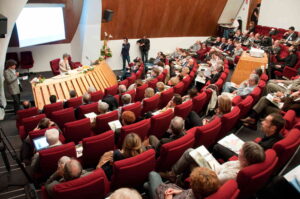PhD defense :
Multiscale fluorescence imaging of Pseudomonas aeruginosa: from cell morphogenesis to antibiotic resensitization
The Gram-negative bacterium Pseudomonas aeruginosa is one of the most clinically relevant opportunistic pathogens in healthcare settings. Its rising antibiotic resistance presents a growing threat to infection control efforts worldwide. In this work, multiscale fluorescence-based imaging techniques were implemented to study P. aeruginosa at both the single-cell and biofilm levels, and combined with genetics, CRISPRi, flow cytometry, and electron microscopy, transcriptomics and motility assays to study two cell surface-associated processes essential for P. aeruginosa viability. The first part of the study focused on the role of the morphogenetic proteins MreBCD in P. aeruginosa. We demonstrated that bacterial actin MreB is crucial for maintaining rod shape, motility, structuring biofilms and modulating susceptibility to β-lactam antibiotics, but is dispensable for viability in P. aeruginosa. In contrast, mreCD is essential for both cell viability and rod shape. The second part of the study focused on resensitising P. aeruginosa to the last-resort antibiotic colistin, a cationic antimicrobial peptide targeting the outer membrane. Ivacaftor, a clinically approved small molecule for cystic fibrosis therapy, was shown to restore the efficacy of colistin in resistant strains. This synergistic effect was demonstrated in both planktonic and biofilm-forming P. aeruginosa cells, as well as cells grown on primary human bronchial epithelia, mimicking lung infection conditions. The synergistic effect was also shown in Klebsiella pneumoniae and Escherichia coli. The mechanisms underlying colistin-ivacaftor synergistic antibacterial action were next explored using a transcriptomic (RNA-seq) analysis, and several candidate genes were further investigated. Together, this PhD work highlights the bacterial cell envelope as a critical vulnerability and the relevance of new therapeutic strategies to combat multidrug-resistant Gram-negative pathogens. This work emphasizes the bacterial cell envelope as a critical vulnerability and highlights the importance of developing new therapeutic strategies to combat multidrug-resistant Gram-negative pathogens.
Jury members:
- Christophe BELOIN, DR, Université Paris Cité
- Ina ATTREE, DR, Université Grenoble Alpes
- Emmanuelle DE, PR, Université de Rouen Normandie
- Florie DESRIAC, MC, Université de Caen Normandie
- Romain MERCIER, CR, Université Lyon
Directed by:
Rut CARBALLIDO-LOPEZ (Research Director, Micalis Institute, INRAE, ProCeD team) and Romain BRIANDET (Research Director, Micalis Institute, INRAE, B3D team).




